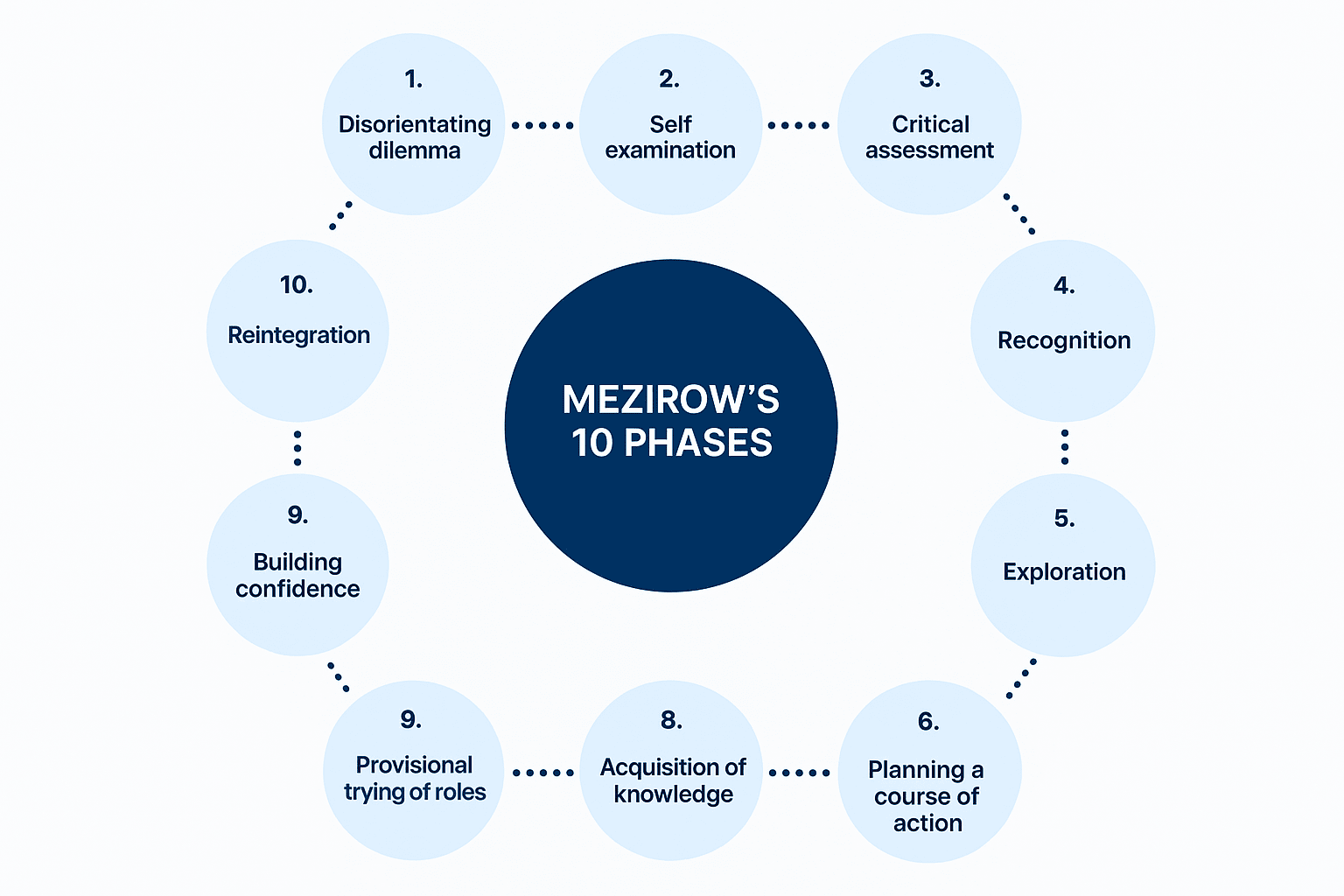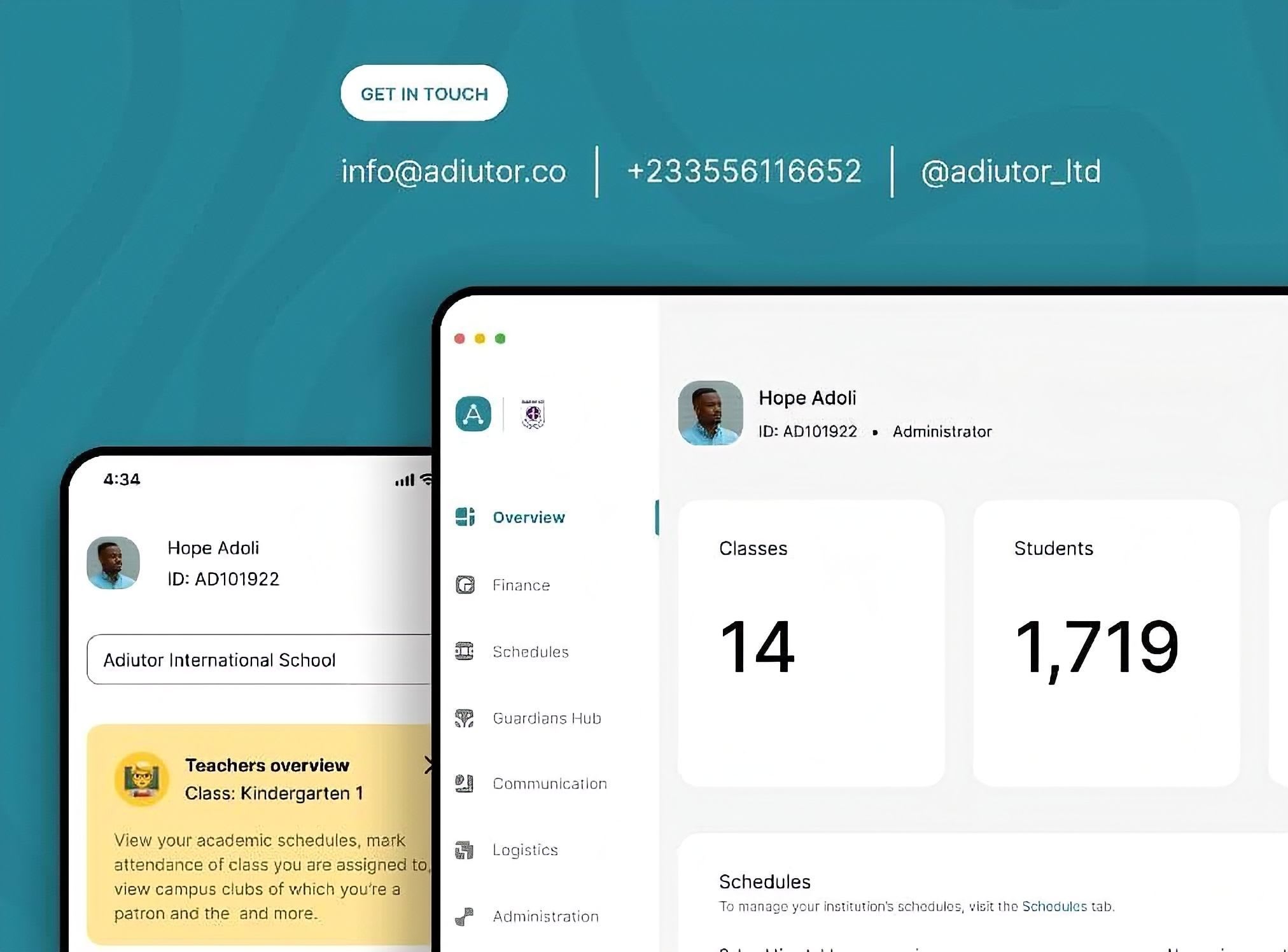Understanding Transformative Learning Theory
Transformative Learning Theory, developed by Jack Mezirow in the late 1970s, focuses on how individuals change their perspectives through reflection. It emphasises on cognitive restructuring which involve both gaining new information and a reassessment of previously held knowledge.

Transformative Learning Theory, developed by Jack Mezirow in the late 1970s, is based primarily on how individuals change their perspectives through deep reflection. It focuses on cognitive restructuring, which involves both gaining new information and a reassessment of previously held knowledge. This process may occur gradually or be triggered by a specific event or experience that creates a sense of dissonance.
In Jack Mezirow’s Transformative Learning Theory, a frame of reference is the lens through which an individual views the world. These are shaped by culture, upbringing, and personal history. In most day-to-day situations, people interpret experiences using these frames without conscious awareness. Mezirow viewed these frames as structures of assumptions and expectations; they define what we see as “normal,” “true,” or “appropriate.” While they help us make sense of the world efficiently, they can also limit our understanding when they go unexamined. Transformative learning occurs when individuals critically examine these assumptions and consider alternative viewpoints, leading to a shift in how they interpret information and make decisions.
How Transformative Learning Happens

While the experience may vary from one learner to another, Mezirow identified a typical sequence of stages that describe how transformation takes place. These stages are not rigid or always linear, but they provide a useful framework for understanding how individuals move from unexamined assumptions to revised perspectives.
1. The Disorienting Dilemma
The process generally begins with a disorienting dilemma: an event, question, or conflict that causes the learner to question their current assumptions. This could be something subtle, like encountering an unfamiliar viewpoint in a discussion, or more significant, such as a personal or professional challenge that conflicts with what the learner believes to be true. At this point, discomfort is common, as the learner becomes aware that their existing frame of reference may not fully explain or respond to the situation.
2. Self-Examination and Critical Reflection
In response, the learner engages in self-examination, often accompanied by feelings of doubt, confusion, or conflict, which leads to critical reflection. Here, the learner begins to assess the validity and origin of their assumptions, beliefs, and values. The questions posed during this phase are often personal: Where did this belief come from? Has it been shaped by past experiences or inherited from others? Does it still serve me in this context?
Critical reflection involves both content reflection (questioning what we believe) and process reflection (questioning how we came to hold that belief). This distinction matters because it shows that transformation isn't just about changing opinions, but also about examining the reasoning behind those opinions.
3. Recognition and Exploration
As reflection deepens, the learner reaches a point of recognising that others have experienced similar shifts. This social dimension can be reassuring and opens the door to exploring new roles, relationships, or viewpoints. Learners might seek out new information, test different ideas, or engage with alternative perspectives through dialogue, reading, or guided activities.
This exploration is an important step as it provides the "raw material" needed for change and allows the learner to experiment with different possibilities in a relatively low-risk setting. At this stage, dialogue with others, particularly in diverse or supportive groups, is often a factor in helping learners refine and validate their emerging perspectives.
4. Forming a New Perspective
With increased clarity, the learner begins to form a new perspective, one that integrates the insights gained through reflection and exploration. This stage involves reorganising and refining their previous beliefs to create a new belief system. The new frame of reference becomes more inclusive, open, and adaptable.
This is often a turning point in the process, as the learner starts to feel more confident navigating the world with this updated understanding. In certain cases, it may also involve making decisions or taking actions that reflect the new way of thinking.
5. Reintegrating and Applying the Change
The final stage involves reintegrating the transformed perspective into everyday life. The learner now acts consistently with their new understanding across different situations. This can affect personal decisions, social interactions, professional conduct, or learning habits. One important thing to note is that this stage is also iterative. The new perspective may continue to evolve as the learner encounters new information or further reflects on their experiences. In this way, transformative learning can be seen as both an outcome and an input for the next cycle of transformation.
Beyond Mezirow: Expanding the Theory
While Mezirow focused on the role of rational critical reflection, which involves examining one's assumptions through reasoned dialogue and logical inquiry, later researchers have expanded the theory by integrating social, emotional, cultural, and experiential aspects.
Patricia Cranton built on Mezirow’s work by highlighting the role of authenticity and individuality in transformative learning. She emphasised that personal growth and identity development are core parts of transformation. According to Cranton, when learners feel safe to express their genuine selves, they are more likely to engage deeply with challenging content and reflect honestly on their beliefs. She also introduced the concept of the authentic educator (someone who models openness and self-awareness, which encourages the same in learners).
Edward Taylor added a cultural and emotional lens to the theory. He pointed to the fact that many transformative learning experiences were deeply emotional and sometimes even spiritual. Taylor argued that affect and emotion are not secondary to the process. Learners may need emotional support, encouragement, or even time to process discomfort before cognitive transformation can occur. Taylor also stressed that culture shapes what people are willing to question and how they experience learning.
Elizabeth O’Sullivan and others introduced the concept of holistic learning, where transformation is viewed as involving the whole person ( mind, body, and spirit ). This perspective has been influential in fields like environmental education and healthcare, where learning often intersects with values, ethics, and personal meaning.

Adiutor
Adiutor means "helper" - we do just that, by taking a load of your school administration and helping you focus on what matters most: the kids.
REFERENCES
Brookfield, S. D. (2000). Transformative learning as ideology critique. In J. Mezirow & Associates (Eds.), Learning as transformation: Critical perspectives on a theory in progress
Cranton, P. (2006). Understanding and promoting transformative learning: A guide for educators of adults (2nd ed.).
Dirkx, J. M. (1998). Transformative learning theory in the practice of adult education: An overview.
Mezirow, J. (1991). Transformative dimensions of adult learning.
Mezirow, J. (2000). Learning as transformation: Critical perspectives on a theory in progress.
Mezirow, J., & Taylor, E. W. (Eds.). (2009). Transformative learning in practice: Insights from community, workplace, and higher education.
Taylor, E. W. (2007). An update of transformative learning theory: A critical review of the empirical research (1999–2005). https://doi.org/10.1080/02601370701219475
Taylor, E. W., & Cranton, P. (2012). The handbook of transformative learning: Theory, research, and practice.
